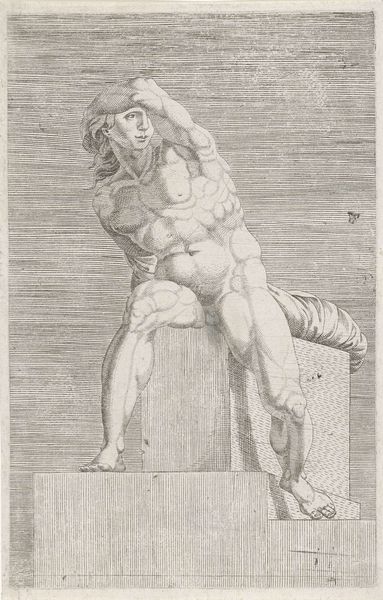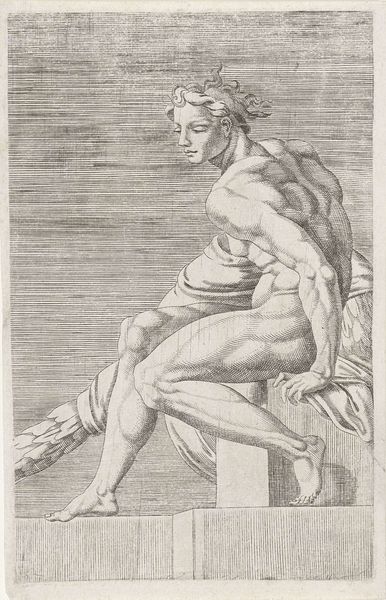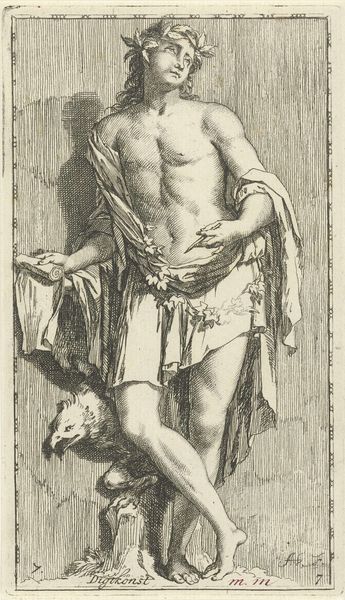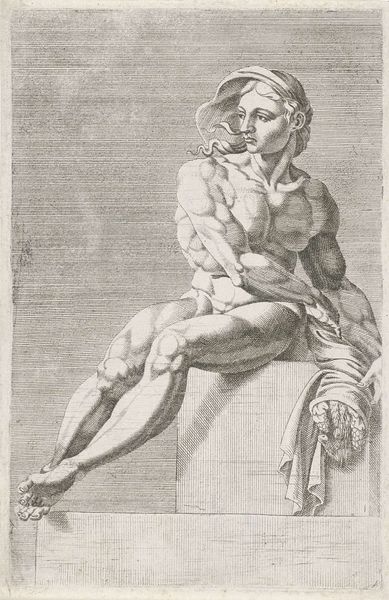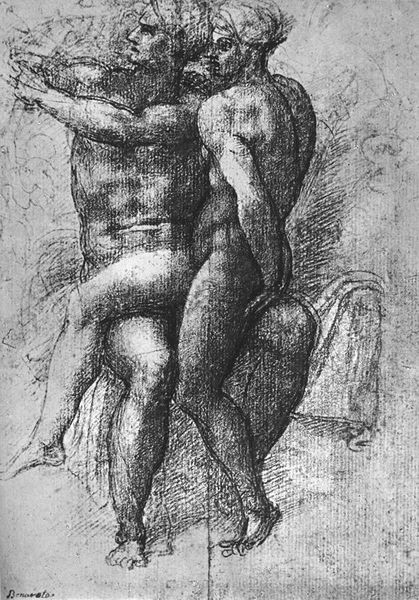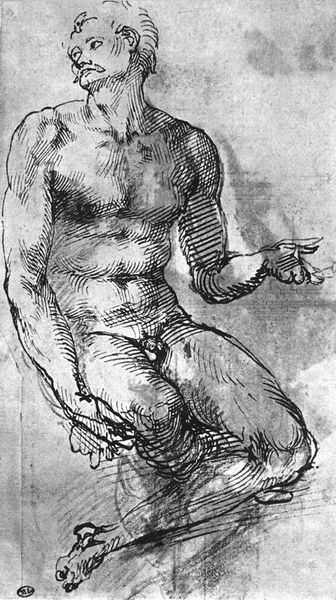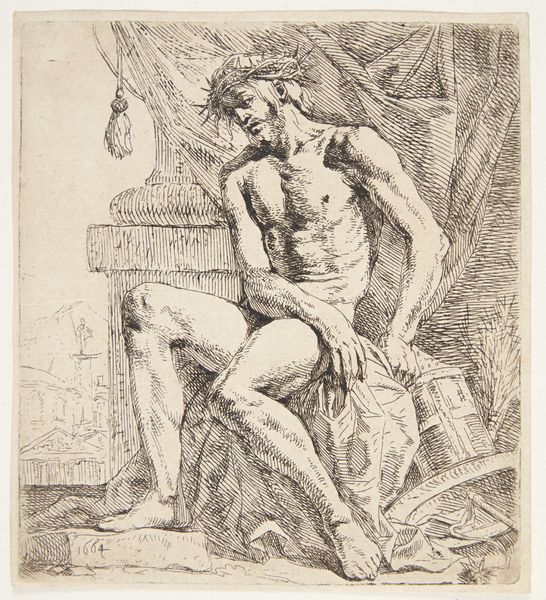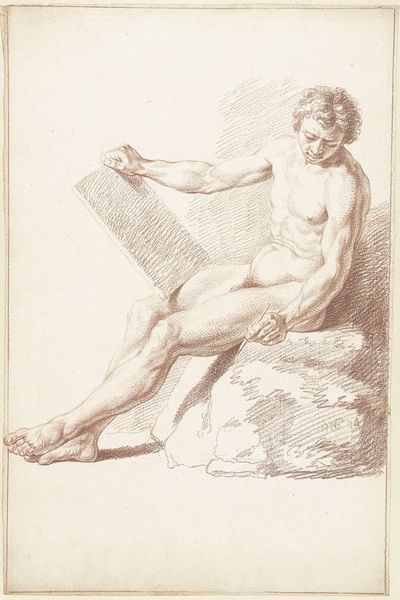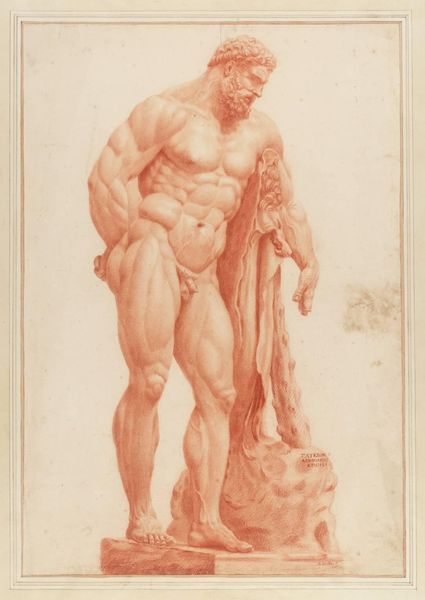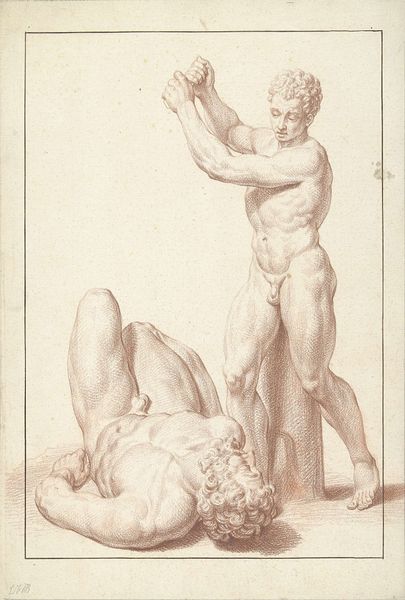
drawing, charcoal
#
portrait
#
drawing
#
charcoal drawing
#
figuration
#
11_renaissance
#
charcoal
#
charcoal
#
italian-renaissance
#
nude
#
realism
#
christ
Copyright: Public domain
Curator: Welcome. We’re looking now at Andrea Mantegna’s "Study for a Christ," created around 1490. It’s currently housed at the British Museum in London and done in charcoal. Editor: Oh, my, what a mood. I immediately get a sense of profound exhaustion from this figure, maybe even surrender. It’s remarkable what Mantegna achieves with just charcoal. Curator: Indeed. The artwork represents an important insight into Mantegna's methods, a preparatory sketch revealing his meticulous approach to anatomical study. These drawings served a crucial role in shaping his final painted compositions, influencing the wider artistic environment of the Renaissance. It illustrates a critical departure from earlier traditions towards realism. Editor: It feels very intimate. You know, it's strange how the constraints of a sketch—the lack of color, the rawness of the medium—can sometimes distill emotion even more powerfully. There's this vulnerability laid bare, almost literally, that’s very affecting. It brings up questions about how artists prepare themselves to capture profound feeling. I wonder what was going through his mind when he drew this piece? Curator: Well, given the socio-political context of the Renaissance, we also have to recognize that representing religious figures was more than mere aesthetic exercise. These depictions reinforced theological and ethical perspectives for society at large. The museum also plays an interesting role here: the display of this image subtly continues its service for those visiting this location. Editor: True, but I wonder about the degree of interpretation the artist even considered. Like what if Mantegna was primarily fascinated with anatomy at that stage of the piece, just playing with the effects of light on musculature? Even today, I sometimes catch myself painting a portrait thinking about form instead of inner character. What does it mean when viewers impose a story, onto something more like, you know, just, the practice? Curator: The interpretation is vital! The narrative evolves with the context—what it represented then compared to our understanding now illustrates the evolution of not only artistic perspectives but the value systems we uphold as societies. The drawing offers layers of meaning accessible to contemporary audiences. Editor: A valuable reflection point, really. Curator: Exactly, thank you for your time.
Comments
No comments
Be the first to comment and join the conversation on the ultimate creative platform.
